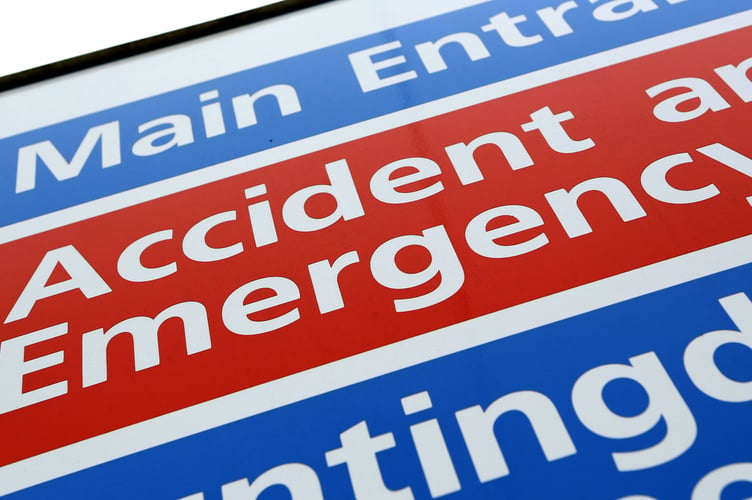More than two-thirds of people who arrived at accident and emergency in the Royal Surrey County Hospital were seen within four hours last month, new figures show – missing the NHS recovery target.
The NHS standard is for 95% of patients to be seen within four hours. However, the Government announced a two-year plan to stabilise NHS services earlier this year which set a recovery target of 76% of patients being seen within four hours by March 2024.
NHS England figures show there were 7,952 visits to A&E at Royal Surrey County Hospital NHS Foundation Trust in February. Of them, 5,569 were seen within four hours – accounting for 70% of arrivals.
It means Royal Surrey County Hospital NHS Foundation Trust fell short of the recovery target and was significantly behind the NHS standard.
Across England, some 71% of patients were admitted, transferred or discharged from A&E within four hours last month, up slightly from 70% in January. The figure hit a record low of 65% in December 2022.
In February, 44,417 emergency admissions in A&E departments – including specialty departments and minor injury units – waited more than 12 hours from a decision to admit to actually being admitted. It was down from 54,308 in January, which was the second highest figure on record.
At Royal Surrey County Hospital NHS Foundation Trust, 339 patients waited longer than four hours for an emergency admission, including 22 who were delayed by more than 12 hours.
Sarah Woolnough, chief executive of The King’s Fund, said the figures show it is unlikely most of the Government’s targets for March 2024 will be achieved.
She added: “Those targets had already been watered down from the standards set out in the NHS Constitution.
“The Government set interim targets such as 76% of people being seen within four hours in A&E, compared with the NHS standard of 95%.
“Ministers also set the expectation that no heart attack or stroke patients would wait more than 30 minutes for an ambulance, far longer than the NHS standard of 18 minutes. Even with these lower goals, both these targets are unlikely to be met by the end of the month.
“In the coming days, we can expect to see the publication of new national guidance for the year ahead, which we suspect will be a continued departure from the NHS constitutional standards.”
The overall number of attendances to A&E at Royal Surrey County Hospital NHS Foundation Trust in February was a drop of 5% on the 8,372 visits recorded during January, but 36% more than the 5,827 patients seen in February 2022.
Across England, A&E departments received 2.2 million visits last month – down slightly from January, but a 12% jump from the number of visits seen in February 2023.
Louise Ansari, chief executive of Healthwatch England welcomed the “modest improvements” in waiting times, but warned other factors also matter to patients, such as “such as how quickly they are initially triaged, their access to food, water, and pain relief, and the quality of communication while waiting for care”.
Professor Sir Stephen Powis, NHS national medical director, said: “Demand for NHS services across the country remains high - this was a record February for urgent and emergency services, with A&E attendances and ambulance callouts up significantly on pre-pandemic levels.
“With new measures like the expansion of same day emergency care services across the country to reduce A&E waiting times, making sure people are checked for worrying symptoms quickly with community diagnostic centres and thousands of patients benefiting from virtual wards, staff right across the NHS are working incredibly hard to deliver on our post pandemic recovery plans.”




